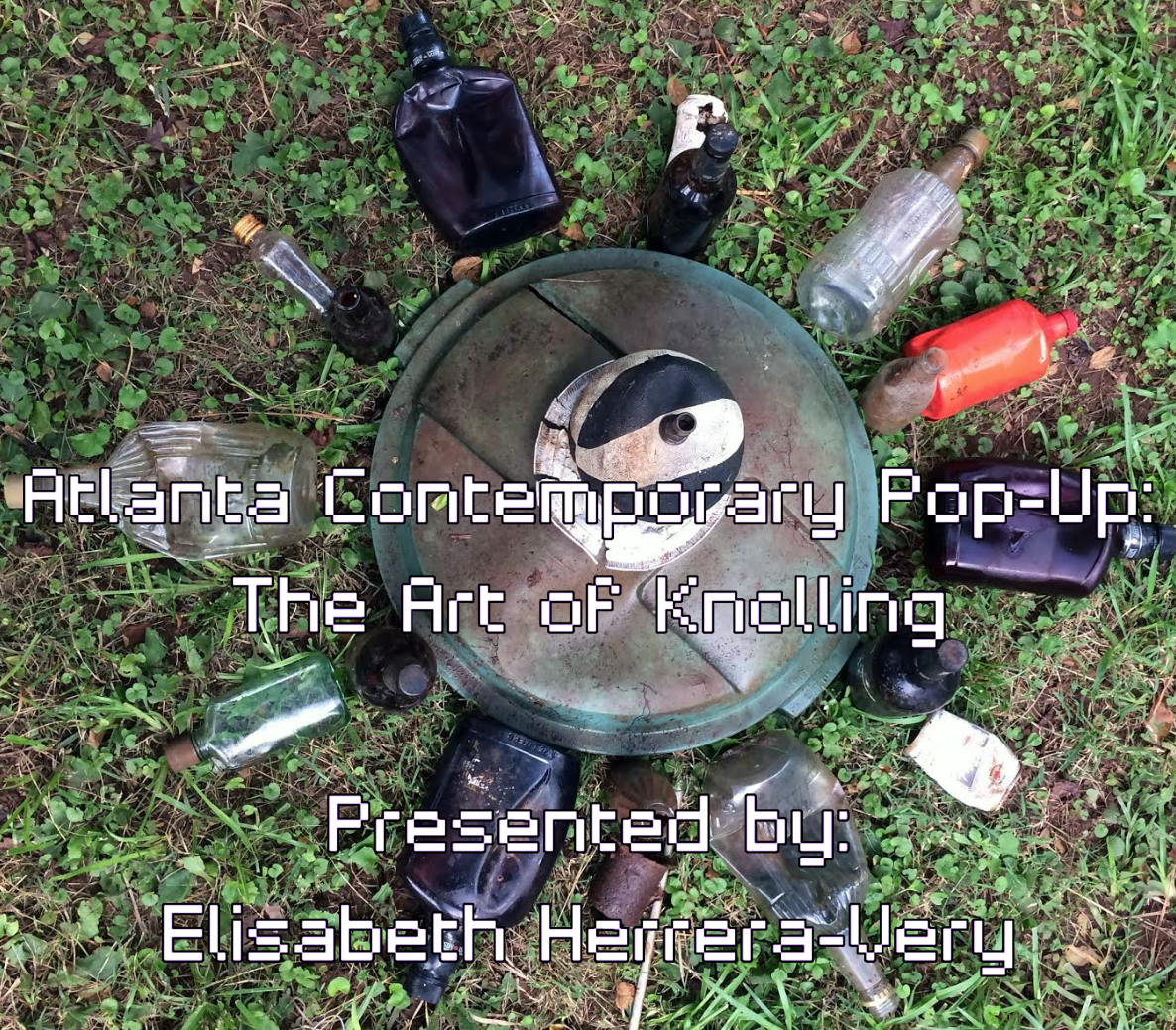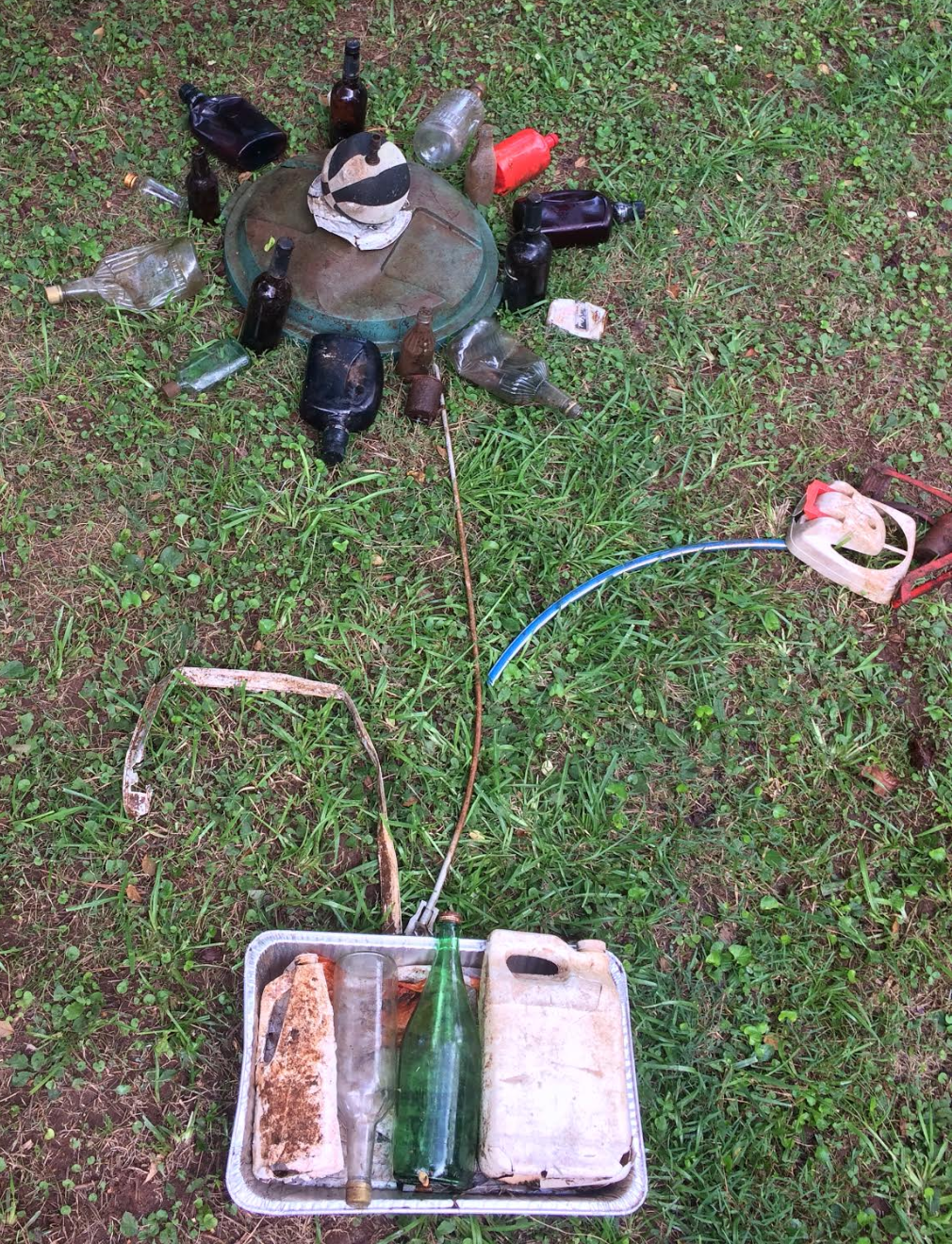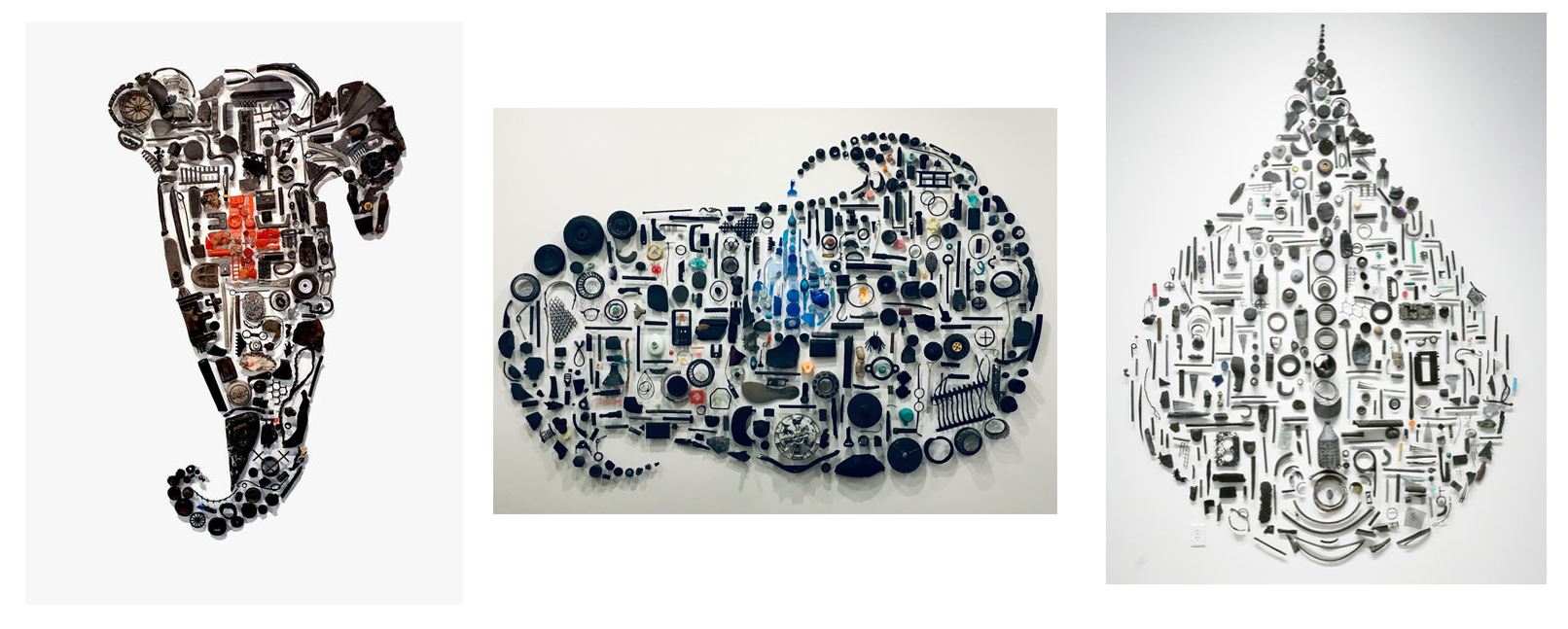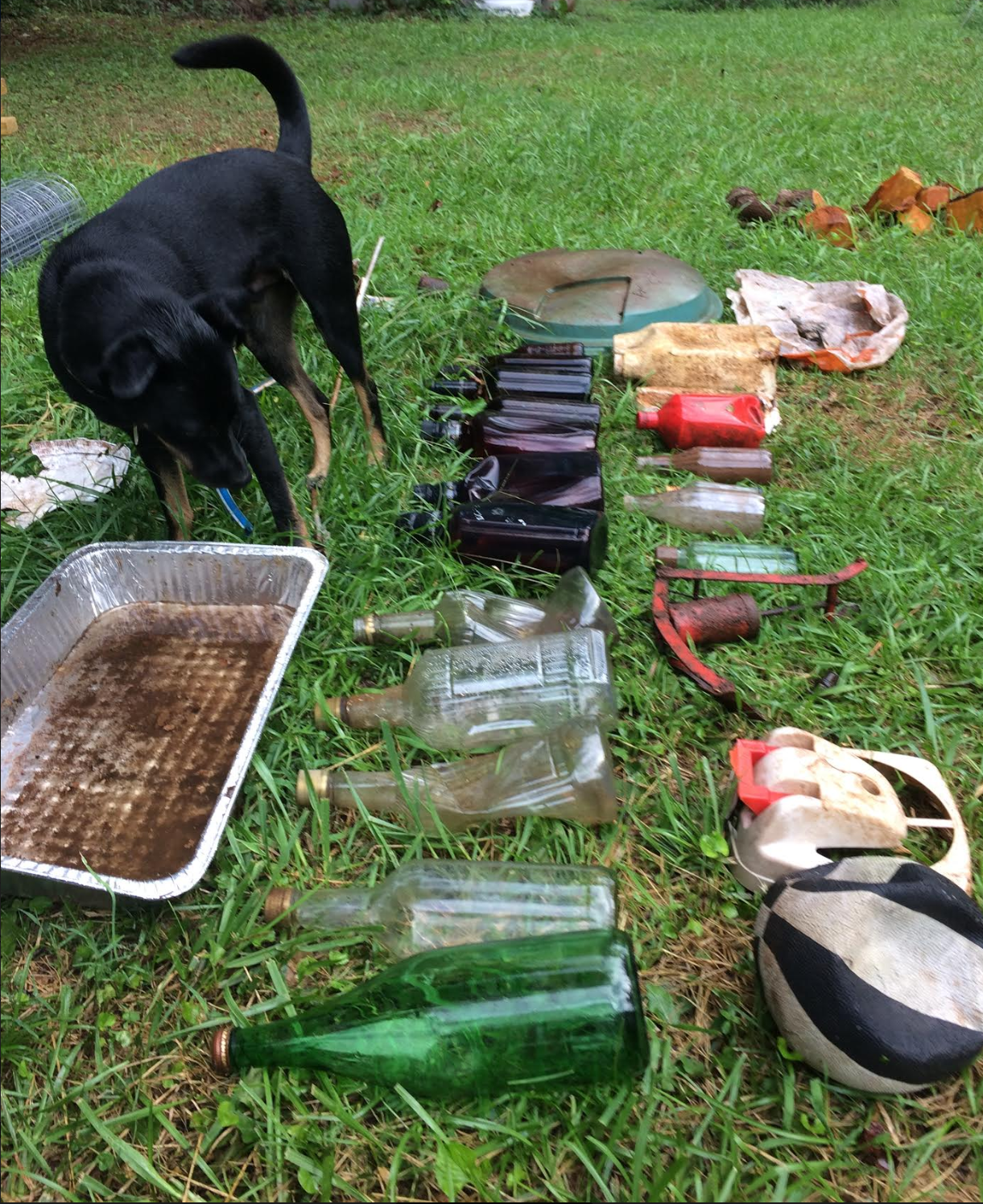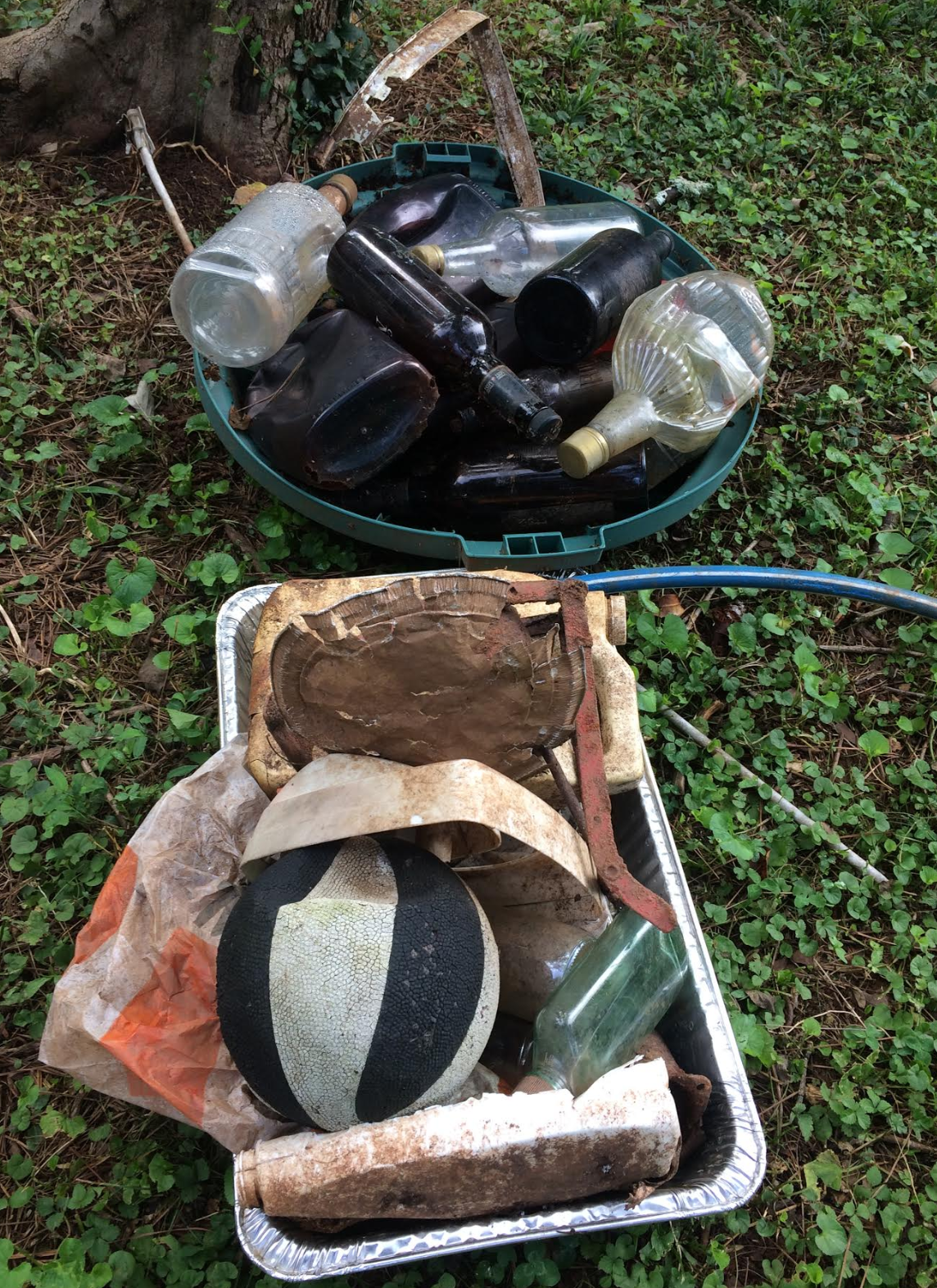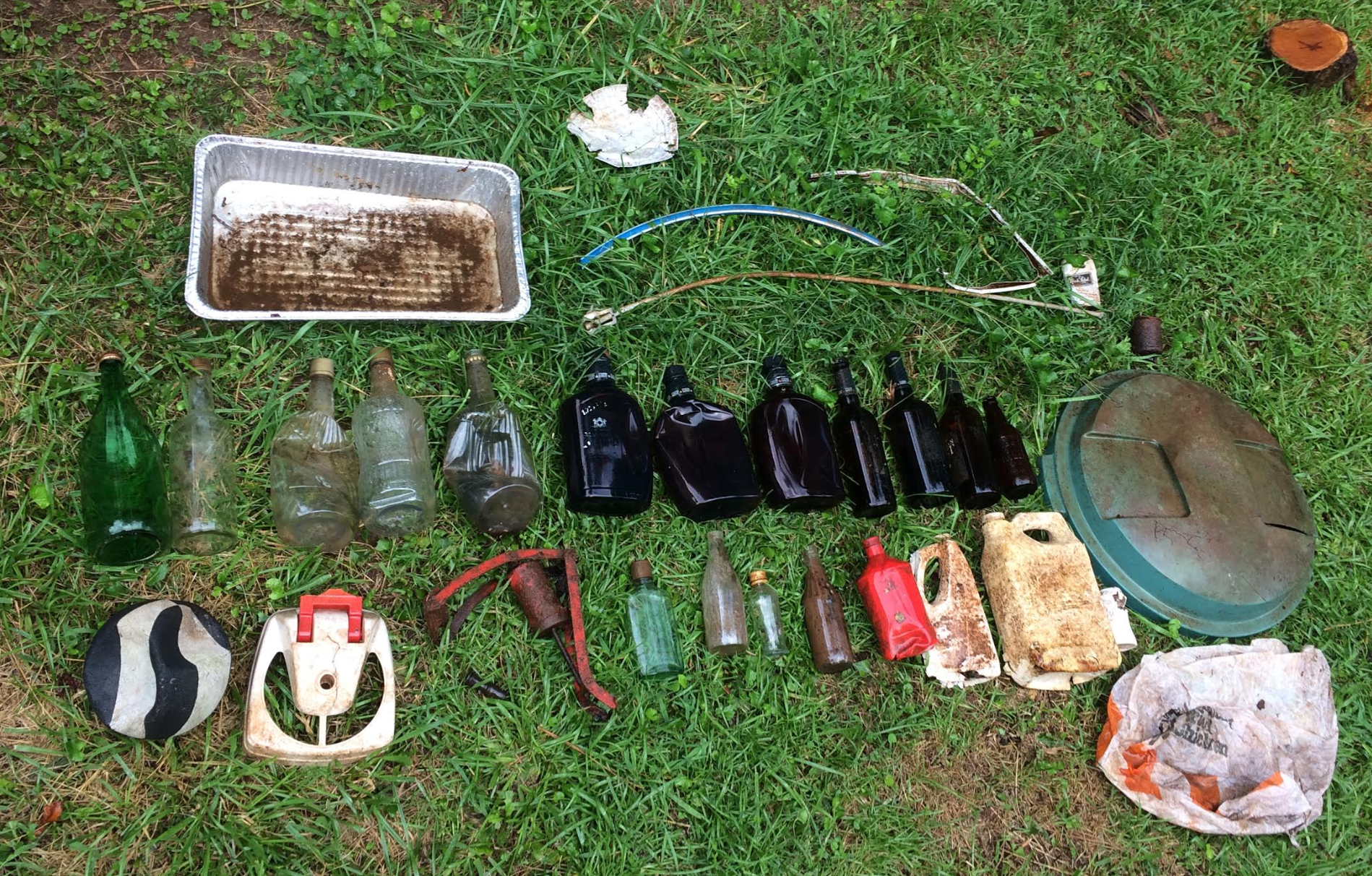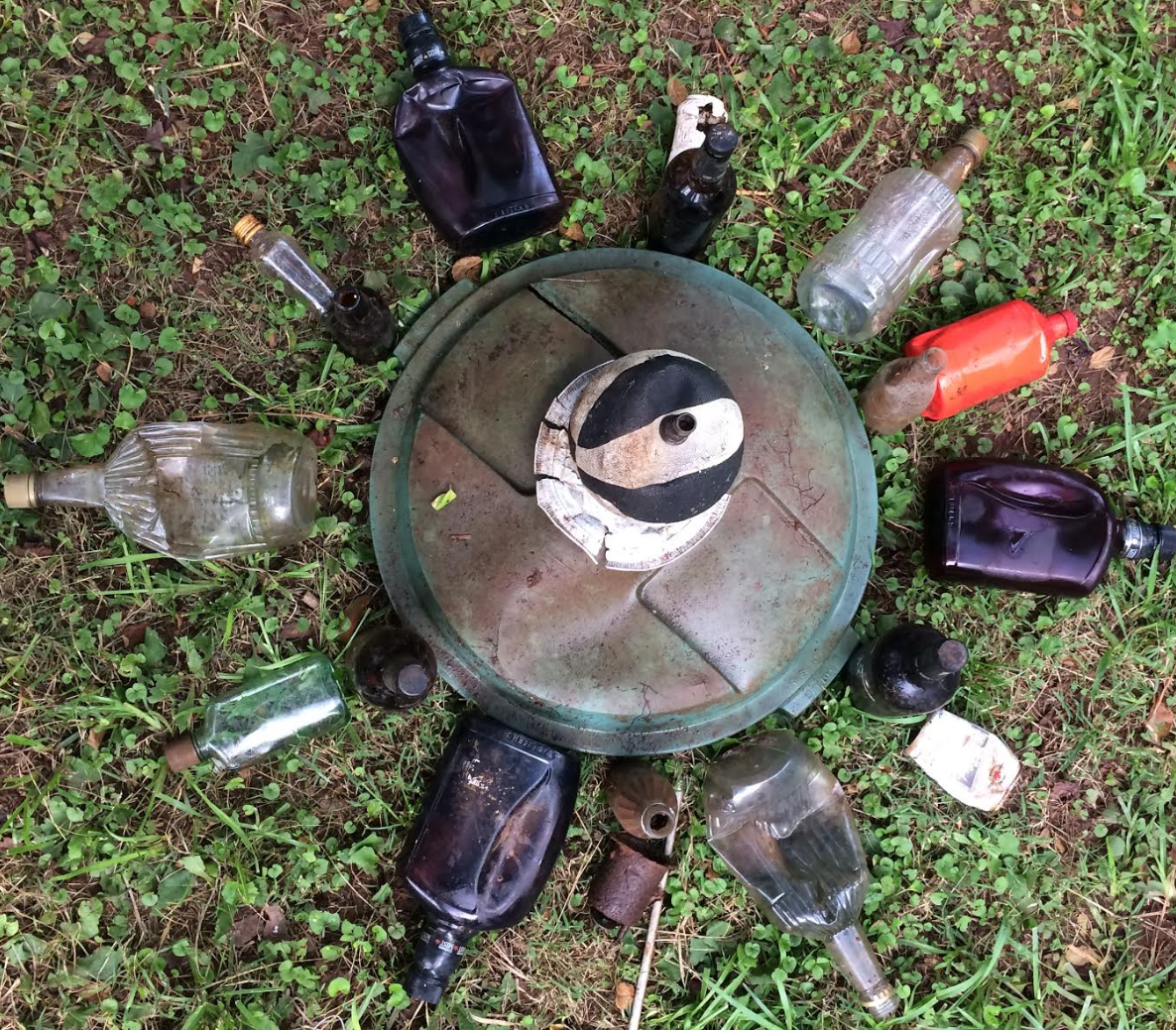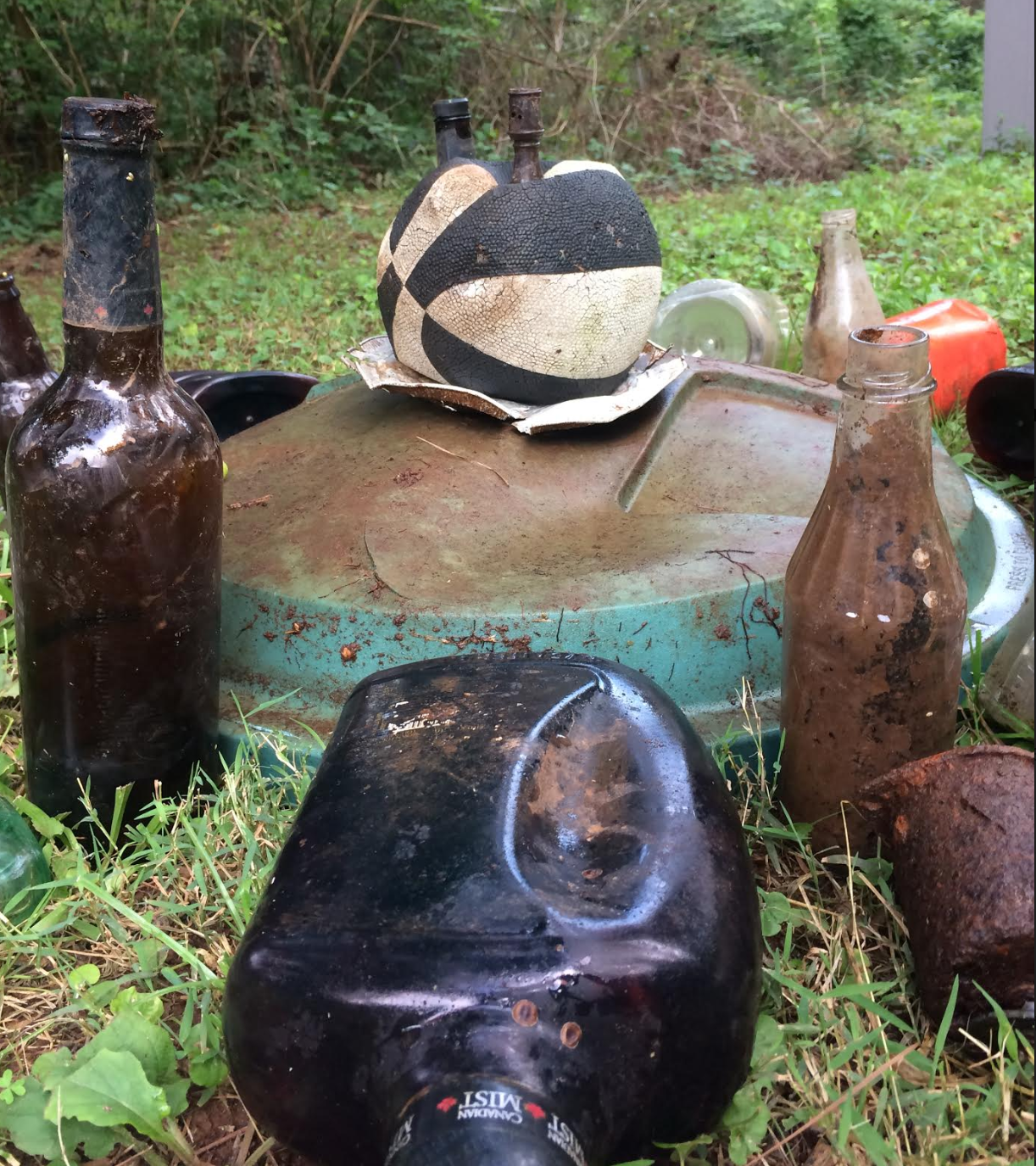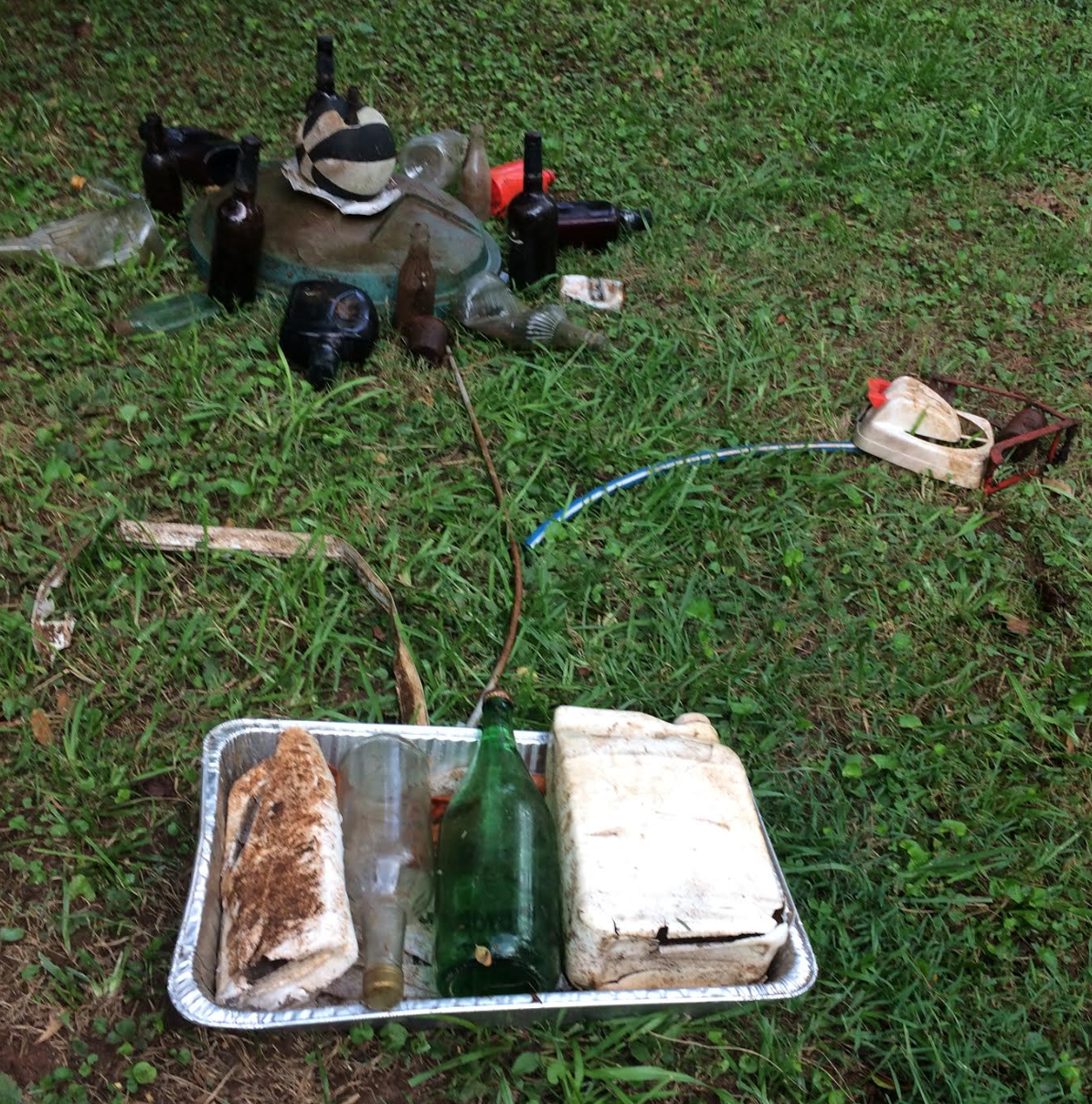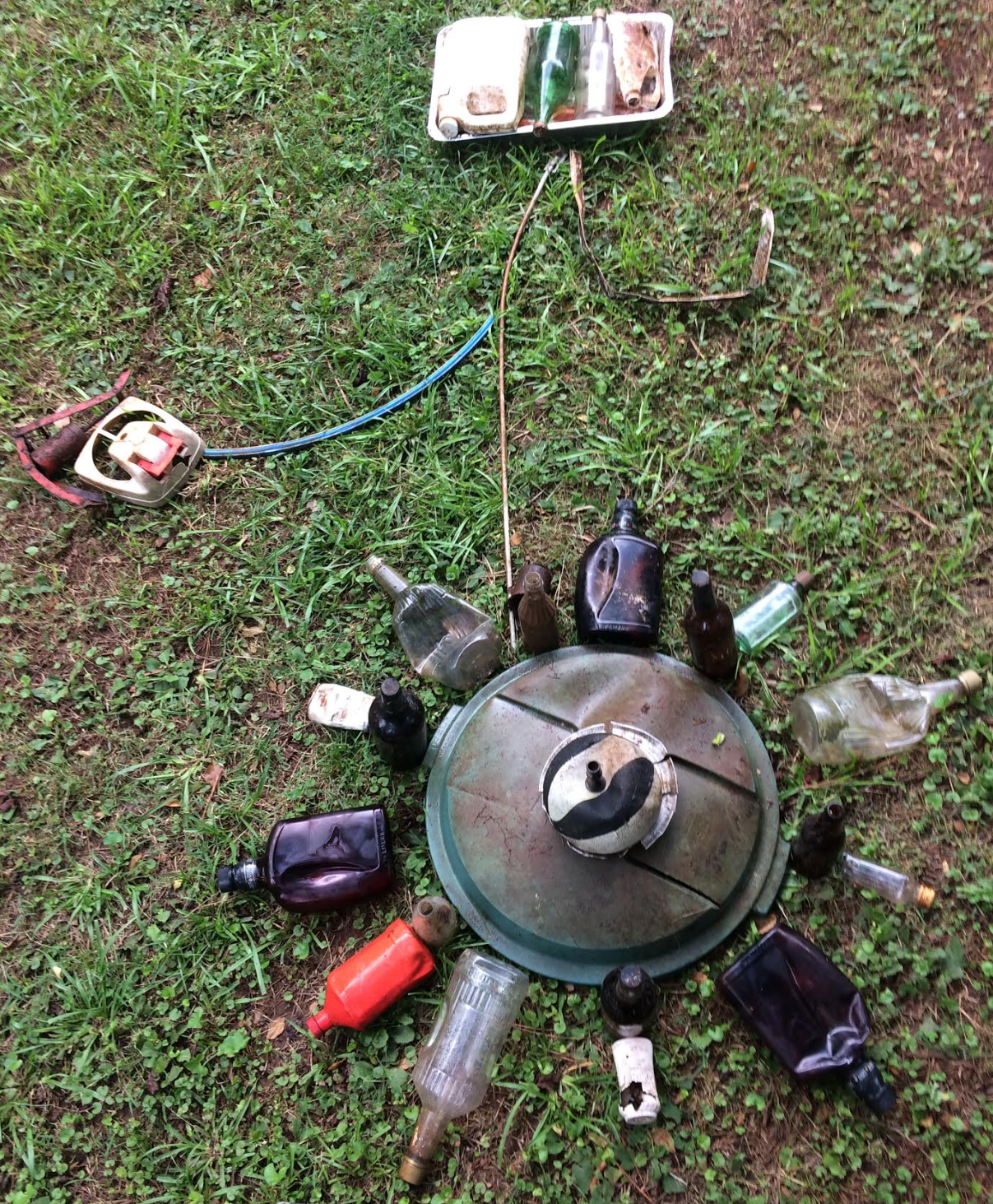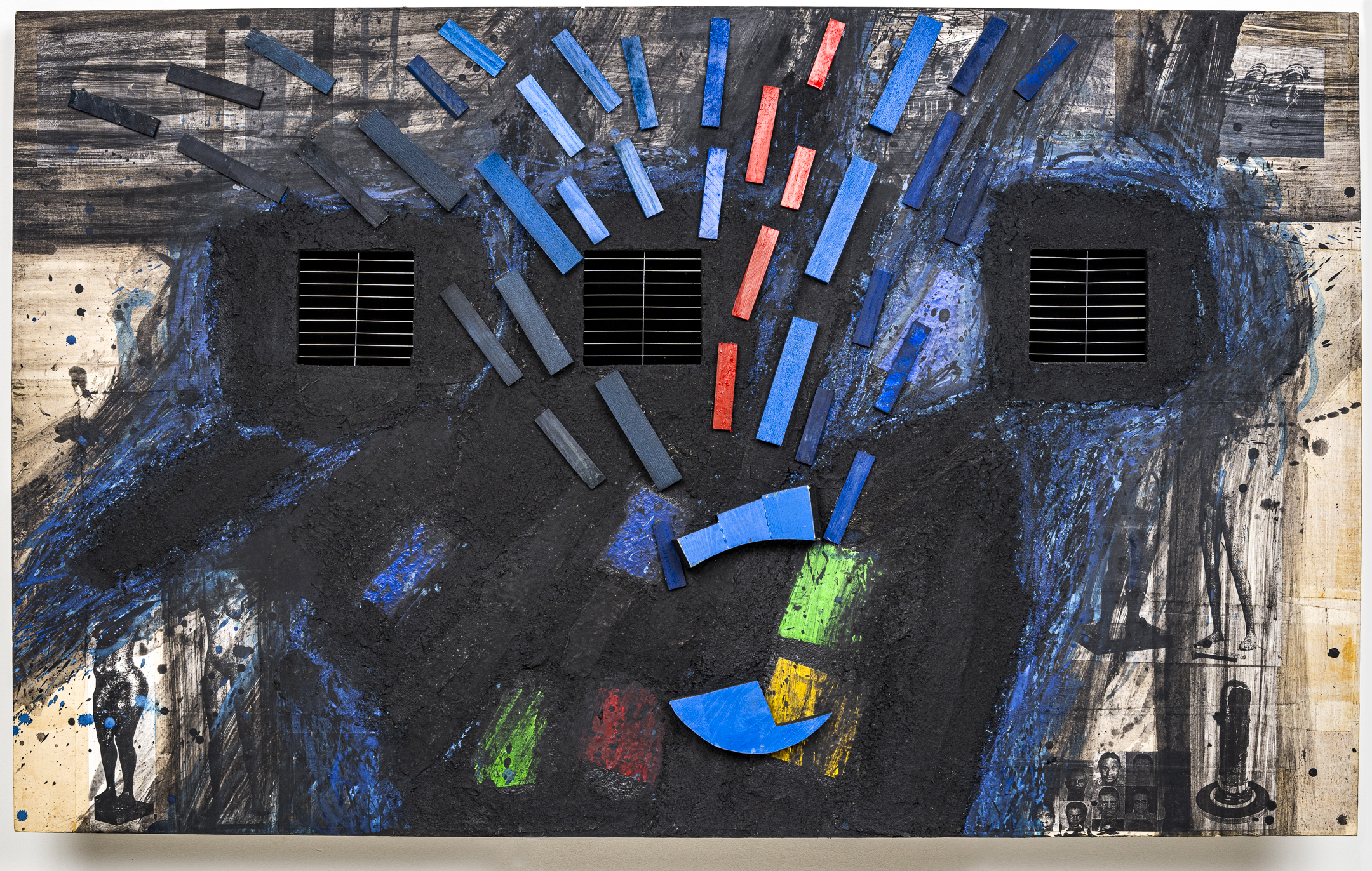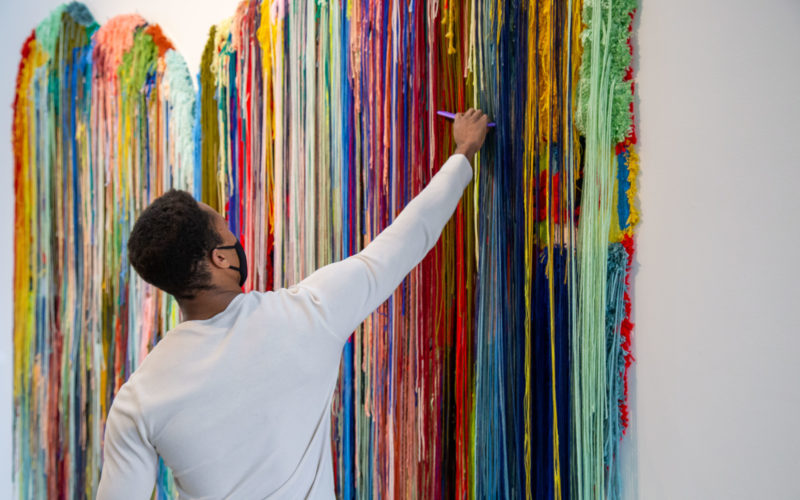Cleaners as Creators
Both Andrew Kromelow in the Knoll design studio and Charles Williams at the IBM offices were employed as janitors but used their task of cleaning up as a catalyst for their own creation. Andrew with his now famous Knolling method and Charles with his amazing sculptures created with discarded office supplies both created with materials they had available to them. Our exhibition of Charles Williams works will be on display until August 2, 2020.
Left, is a photo from our exhibition of Charles Williams works; right, is a photo of Knolling found from an image search. Both show drawing materials arranged in purposeful ways. When you create your found object arrangement, think about how the method you use to organize your materials can affect the viewers experience when seeing your work, and how the arrangement can convey differing tones.
Pam Longobardi
Pam Longobardi is a distinguished professor of art at Georgia State University and a former member of Atlanta Contemporary’s Studio Artist Program. Many of her works explore consumerism and the effect of plastic waste in the natural environment. Her works highlight the partnership between instillation art and environmental activism. To learn more, see her amazing Drifters Project.
Pam’s work will be featured in our upcoming exhibition She is Here, a retrospective exploring past and present participants of Atlanta Contemporary’s Studio Artist Program.
The goal of our Friday pop-up is to encourage you to create using materials that are inexpensive or readily available and explore techniques that are approachable and easy to integrate into your own artist practice. This week let’s explore arranging found materials to create something new!
Think about what you already have. Do you collect coasters, ticket stubs, or bottle caps? Is your desktop so cluttered you don’t know where to begin? These are both great scenarios to employ Knolling or purposeful arrangement. When you see everything you have laid out you can start making visual connections between like objects, things that belong together, and new uses for old items.
Materials you’ll need:
- Found objects
- Large flat surface
- Camera (or the camera on your smart phone)
Step 1: Collect your items
Gather up all of the items you’ll be using for this process and make a pile in one location. Once you have everything you’ll be using compiled together you can decide how much space you’ll need to create your assemblage.
All of these items were found scattered throughout my backyard.
Step 2: Knoll it!
It’s time to organize these items. All like items should be grouped together. You may be grouping by size, color, texture, or feeling; there’s no wrong way for you to organize these items. The way you decide to sort your items can help you decide how you’d like to construct your arrangement.
Step 3: Arrange the Composition
After organizing your items, you will be able to see visual relationships between objects. You may want to arrange your composition with a certain theme or message in mind or you might want to let the materials dictate the composition.
Here you can see the giant trash flower!
Step 4: Take a Photo
Capture your composition with a photograph. Now you have a record of all these items.
My items are all headed to the recycle bin, however, by utilizing this process I learned a little about the history of my house and the people who have lived here in the past. It is also a sobering reminder to see effects of trash and plastic on a natural environment. These items have been in the yard for years, and if I wouldn’t have picked them up, they’d still be there for years and years to come.
Share your work
We love seeing how you use these prompts in your artist practice. Share your work with us on social media by using the tag: #ACMakes.
